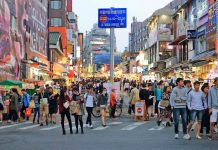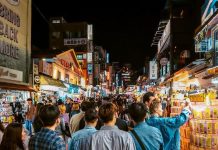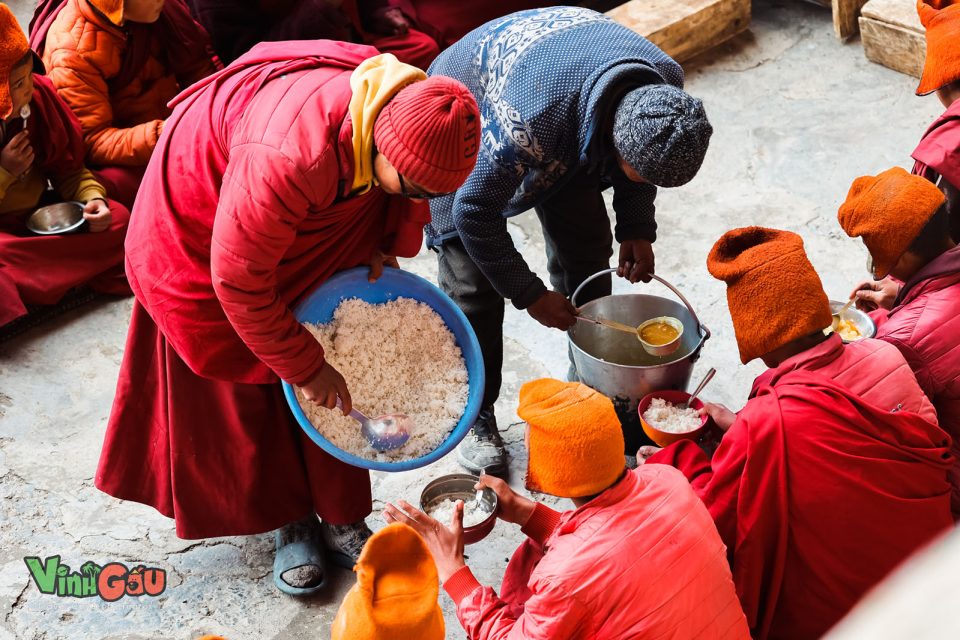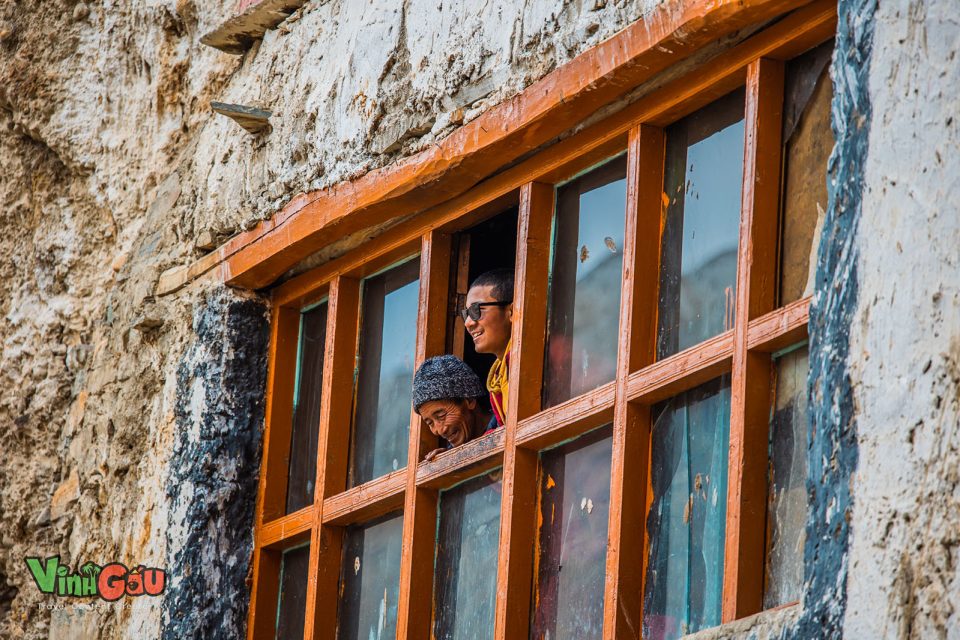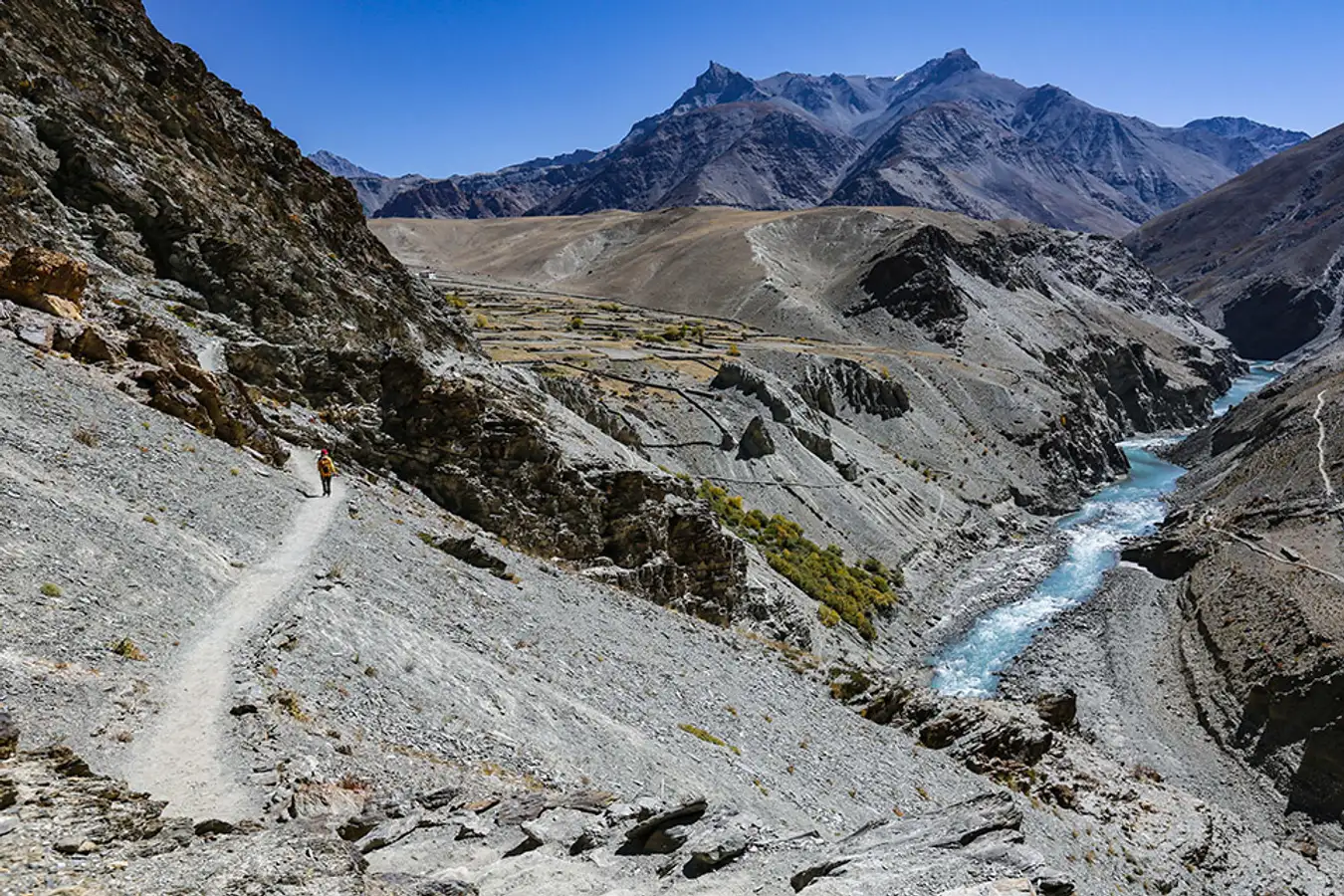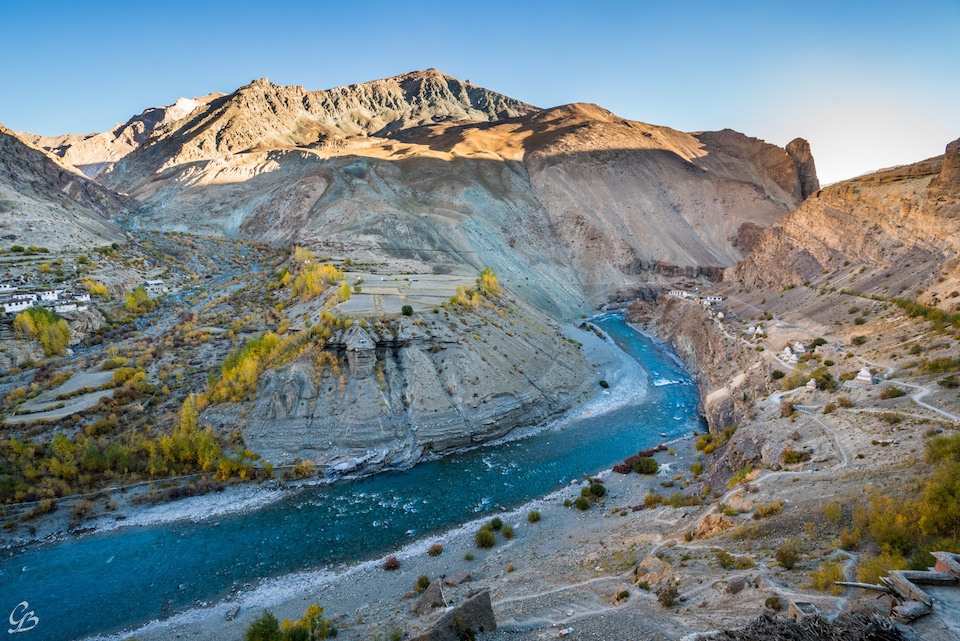Dzongkul is a monastery of the Drukpa school of Tibetan Buddhism, located southwest of the Bardur River in the Stod valley. The monastery used to be the meditation place of Naropa – a famous yogi of India, today in Dzongkul still keeps his footprints. Dzongkul also preserves many thangkas of famous Drukpa lamas along with some frescoes on the cave walls created nearly 300 years ago. The Dzongkul Huchot Festival held on the 16th and 17th of the fourth Tibetan month is the best time to visit Dzongkul Monastery.
- Where to go & what to do in Varanasi? — 15+ places to visit & best things to do in Varanasi
- What to buy in India? — 29+ best gifts from India & best things to buy in India
- Leh Ladakh bike trip itinerary — How to spend 6 days in Ladakh by motorbike?
- Leh Ladakh bike trip blog — Ladakh bike trip guide & tips for first-timers
- Ladakh trip cost per person from Delhi — How much does Ladakh trip by bike cost?
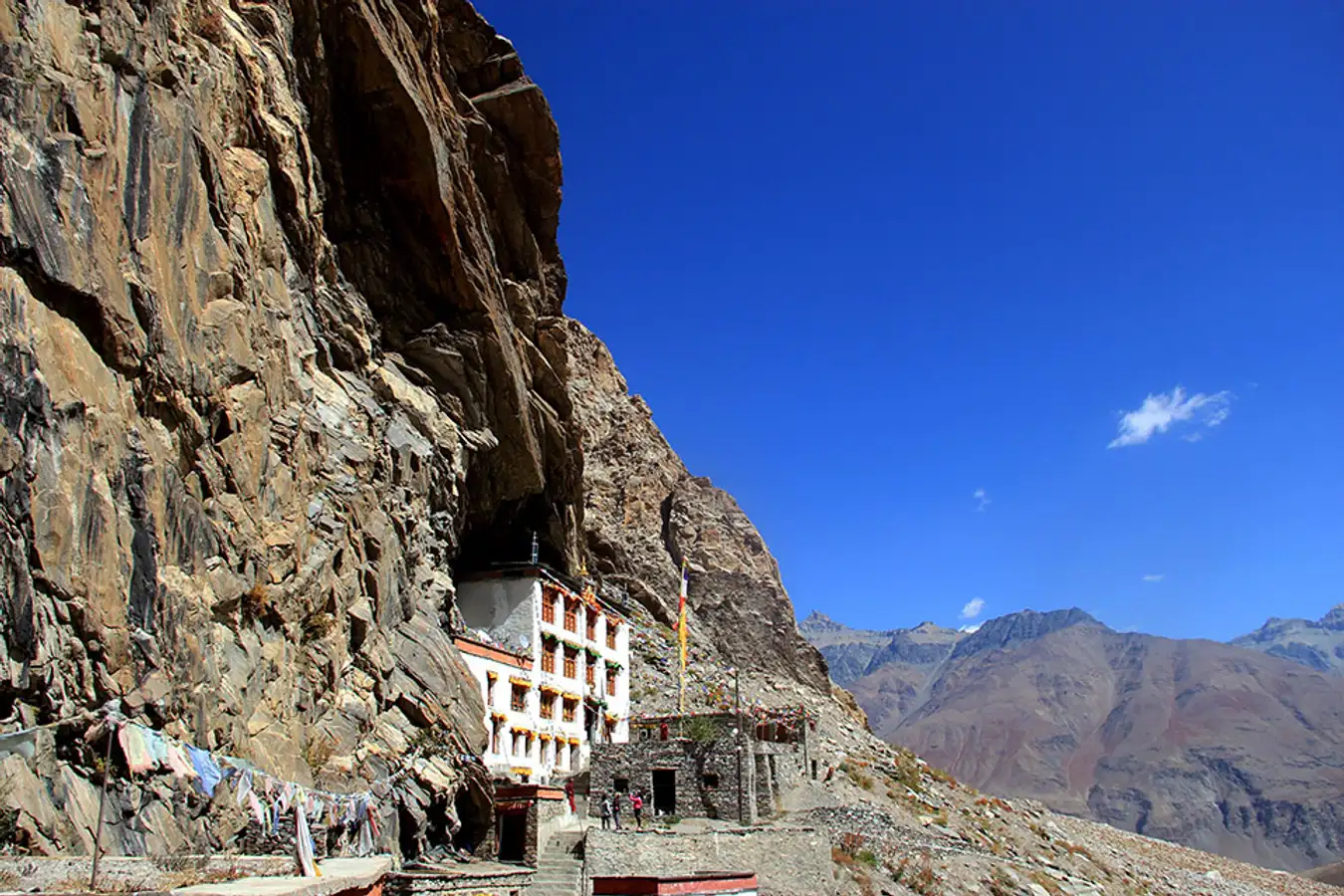
Sani Monastery
Just 6 km before you reach Padum is the village of Sani. It is the home of one of the oldest Tibetan Buddhist monasteries in the Ladakh region and Zanskar valley. It is believed to date back to around the first century, built by Karnishka – the famous Kushan Emperor.

Sani Monastery is one of the holiest places in the Himalayas and holds very special relics. It is believed that Padmasambhava, also known as Guru Rinpoche is said to have lived in Sani in the 8th century.
Phuktal (Phugtal) Monastery

Phugtal Monastery or Phuktal Gompa was founded in the early 12th century by Gangsem Sherap Sampo, a disciple of the monk Tsongkhapa, the founder of the Gelugpa school, the Yellow Hat sect of Tibetan Buddhism. However, Phuktal was forgotten until the Hungarian Orientalist Alexander Cosmo de Koros came here around 1826. Phuktal is perched on a cliff quite far from Padum (about an hour’s drive later, you have to walk), it’s built entirely of wood and mud, at the entrance of the natural cave, over the gorge. The trekking path from Padum to the monastery is very beautiful and breathtaking, especially in the autumn when the trees are bright yellow in the mountains.

Stongdey Monastery

Just 18 km north of Padum is Stongdey Monastery, the second largest and oldest monastery in Zanskar valley. Perched atop a hill overlooking the valley, it offers a vantage point for views of the valley.

It is located 300m above the valley, offering breathtaking views of the surrounding mountains and villages. There are several temples with beautiful murals inside the gompa. Gon Khang – the temple of the guardian gods is one of the outstanding temples.
Stongday, Stongde, Tonday or Thonde are all other names for this monastery. Stongday Monastery was founded nearly 10 centuries ago and the great Master Je Tsongkhapa used to practice here.


From the Monastery, you are free to enjoy the beauty that nature has brought to the valley below. The image of snow-white mountains in the Himalayas blends with the brown-brown color of the arid land and is further accentuated by winding asphalt roads, making the space in front of you more majestic than ever.
Zangla
Further up the valley north of Padum, Zangla is home to a nunnery and 17th-century palace ruins. You’ll then have to walk uphill on a carefully crafted path to the palace ruins.

The village of Zangla was ruled until recently by a king who still lives here with his family. The village is protected by a small ruined citadel built on a hill and it is a 15-minute walk up the citadel. Inside, a small Buddhist shrine overlooking the entire valley is still intact. The nunnery center is another place worth visiting in Zangla, where visitors can learn about the daily lives of the nuns.

Sheela Waterfall (# zanskar travel blog)
Sheela Falls is a beautiful waterfall located in the Zanskar valley of Ladakh, India. It is a popular tourist destination and is known for its stunning views and clear waters. The waterfall is located about 4.5 km from Padum town and can be reached by taxi.

The waterfall is located in a small village called Sheela and is named after it. The waterfall has a height of about 20m, falling from a rocky cliff into a lake.
Lake Sani

Sani Lake is a beautiful lake located near the village of Sani, where a Buddhist monastery is located. The lake is believed by locals to be sacred and is a popular camping and picnic spot for locals. There is also a magnificent statue of Guru Rinpoche right in the middle of the lake.
Chadar trek
The Chadar river trek is one of the most popular hikes in Zanskar taking place during the winter months, a winter adventure on the frozen Zanskar River. It is one of the only ways to reach Padum during the winter months and connects Leh with Padum through the remote valley.

The 60km trek takes about 5 days to complete and must be done with a group and climbing company. The temperature is much lower than zero degrees and the weather conditions are extremely harsh. Any travel and trekking agent in Leh can help arrange a Chadar Trek adventure.
It is usually completed during January and February, with only a few treks per year. It is considered a great challenge and should only be done by those who are well-adapted and fit.
Purney homestay in Zanskar
Leaving Padum, I went to Purney village. Although it is only about 50km from Padum, the travel time is about 3 hours, because the road is very bad, most of the road is a stretch with a cliff on one side, a stream and a rocky mountain on the other, and then there are avalanches causing landslides made a slightly longer journey.

Purney village has only about 5 households, in addition to raising Yak – a wild that lives a lot along the Himalayas – they also run a homestay business so that tourists from far away can visit and live with them. Only thing, each year they can only welcome guests from June to September only, the rest of the time, this village will be flooded with snow, so there are almost no tourists at all.
Aba, the word to call Dad in Ladakhi, Stanzin Nurbu welcomed his group in a small house with a few rooms that still smelled of fresh paint in time to welcome the first wave of visitors of this year’s tourist season. The weather outside is -7 degrees Celsius, very cold, so Aba quickly led me down a dark alleyway to the main kitchen of the house. When it was much warmer, the group began to get to know Aba’s whole family.

In that small house, I met my 84-year-old grandmother, but her hands and feet did not rest, refusing to sit still and rest even though her niece Putith was diligently sweeping the floor, cleaning each table, kitchen corner, etc., now I noticed, even though the kitchen is small, it is arranged very neatly and cleanly, even the pots and kettles are shiny even though they are cooked on wood stoves and dried Yak cow dung. Meanwhile, Aba diligently cleaned each lampstand by the fire. Here, every day they will light a lamp made of butter to pray for everyone’s safety & health, when the lampstands are almost burnt out after about a month, Aba will take it out and clean it to prepare for the coming days.

After cleaning, her daughter Putith took a pot of water to cook masala tea – a popular tea here – to invite guests. It was cold, it was cold, but there’s nothing better than enjoying sips of hot, delicious tea cup like this. And still not yet, knowing that me likes coffee, she also took out the coffee, added a little sugar, a little water, and began to beat it to a fairly thick mixture, look like caramel. And scoop those teaspoons into a glass, mix it with masala tea to invite me to enjoy.

Wow, I’ve never experienced this type of coffee drink before, but the rich aroma of masala combined with the aroma of coffee, makes the masala coffee and tea taste much better – even though it was quite sweet to me. On the contrary, I invited her and Aba to enjoy the special coffee pots from Dien Bien, Tanzania and Kenya that I brought with me. The hobby of coffee drinkers is here, being able to exchange coffee culture to better understand each other’s coffee enjoyment style.
When evening came, the village of Purney had snowfall with a thickness of almost a finger, making me worried for fear that it would affect the next day’s plans. If the snow keeps falling like this, the car will not be able to drive nor walk, it was likely that it will have to stay here until the snow melts.

The next morning, the sunlight coming through the gap in the curtains woke me up. Pulling the curtain open, I see that the snow has stopped falling, the snow has melted a lot and only a thin layer of ice remains, the trip was highly likely to be still possible.

Trekking in Zanskar (# things to do in zanskar valley)
Chadar trek (Zanskar Frozen River Trek)
Zanskar is very famous because the Chadar Trek can only be done in winter. In essence, you will be hiking on the frozen river from the Zanskar valley to Leh. Chadar trek is a difficult, dangerous route and requires you to have health and full equipment, so Chadar is considered the most challenging trek in India. The main factor that made Chadar difficult is the weather. Winter in Zanskar is so cold that the river freezes, walking on the glacier on sunny days, clear skies will make it easier to breathe, but just snowing is a whole day of hard, hard walking and must be careful every inch. However, the spectacular scenery, the grandeur and the challenge factor are the rewards for those who conquer this route.


If you’re planning on doing this adventure, you’d better come here in January and February when the ice is at its thickest. You will need to pass a medical assessment at the local hospital in Leh, otherwise you will not be able to make this trip.
Darcha – Padum Trek
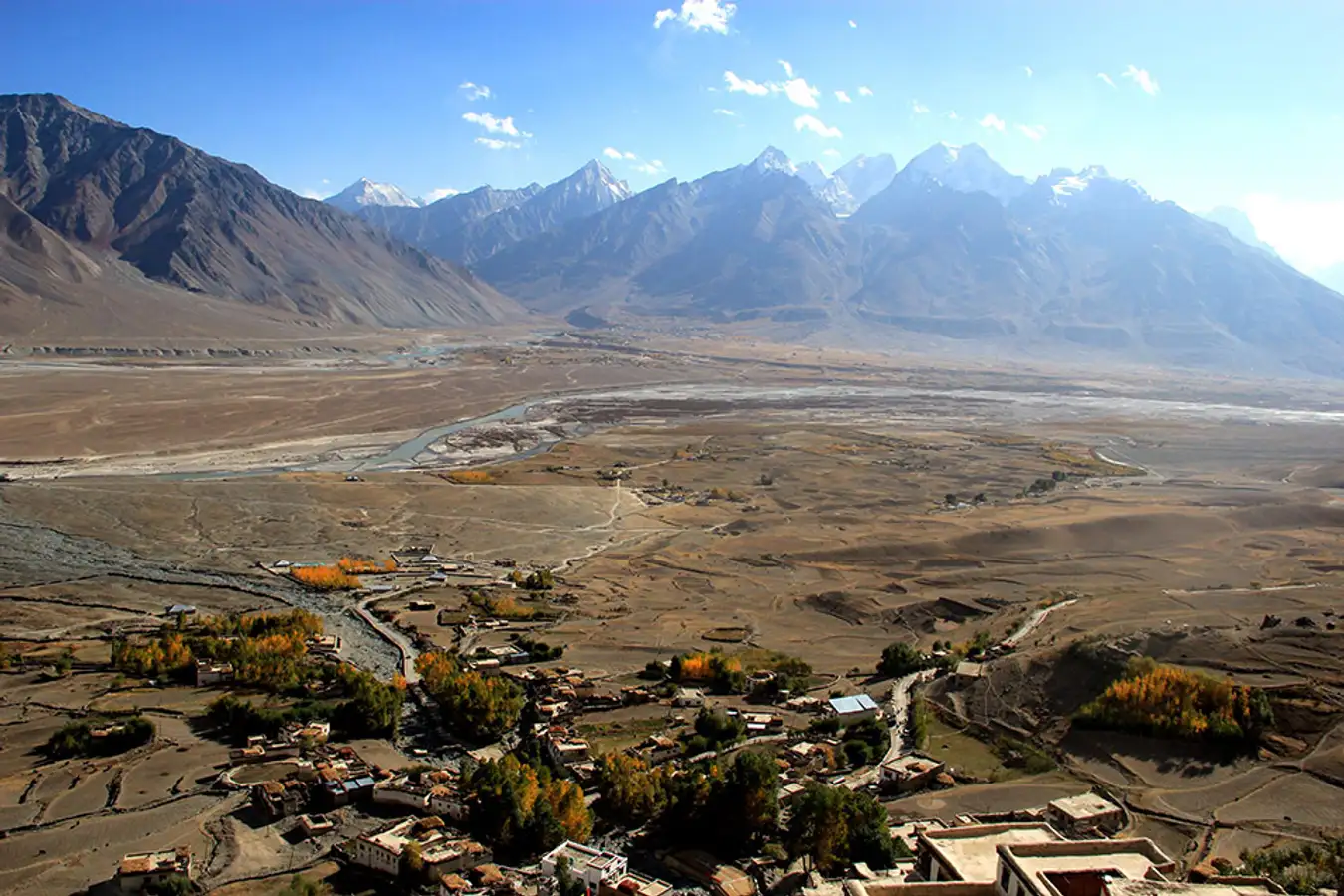
The trek from Darcha to Padum is the dream road of many people, it is 127km long and you have to trek for at least 10 days through Shingo La pass higher than 4000m. Breathtaking landscapes, unspoiled valleys, dreamy villages untouched by modern life, and people so pure in their hearts will make the trip especially memorable. You can do this trek on your own but you will have to bring your tent, sleeping bag, food, water and other necessary items. You can buy a full-service tour or hire a porter at Darcha or Manali to help carry your luggage and be your guide.
Phuktal Monastery
The trek from Padum to Phuktal is a very famous route in Zanskar. If you have a lot of time and health, start the trek from Padum to Phuktal, the distance is about 60km and go for about 4-5 days. Along the way there will be small villages for you to stay overnight. If you don’t have much time, you can rent a car to take you to Raru village or Anmu village, 20 to 12km from Phuktal. The hostel at the foot of Phuktal Monastery cannot be booked online, the area around Phuktal also often does not have a phone signal so you just go there and book directly. Going to the guesthouse you can order lunch, dinner and breakfast. However, if you go in late autumn (late September onwards), the hostel does not stock much food, so it is best to bring a lot of your own food with you.

The main highlight on the journey to discover Zanskar is Phugtal monastery (also known as Phuktal), which has existed for more than 2500 years. Phug means “cave”, tal means “liberation or leisure”, to say that Phugtal is the cave of liberation to help lamas or anyone who wants to find liberation and peace because this Phuktal Monastery is isolated from the outside world, no internet, no phone signal, no electricity, only a little solar electricity.
With a unique construction, the entire monastery was built by mud and wood on the craggy cliff facing the Lugnak River, combined with the history of the monastery has made this monastery one of the symbols of Zanskar. If you look from the other side of the river, Phuktal Monastery looks like a giant beehive in the middle of nature. They built in such terrain partly so that the lamas could devote themselves to their practice, partly to prevent thieves from coming in and taking away the monastery’s valuables.
To get here, it’s only on foot. The distance from Purney to Phuktal Monastery is about 4km, along the Tsarap river and the trekking time is about 2 hours. The road takes me from one beautiful scene to another, from the snowy mountains to the beautiful green Tsarap river, it will take a little more time to take pictures anyway.
When I reached the suspension bridge over the river, I saw the gate to the Monastery. Looking at the relatively new wooden planks on the suspension bridge, I think this bridge has only been completed recently, looking to the right, I see that the old suspension bridge is almost completely damaged after the recent flood.
From here, follow the trail for about 15 more minutes, then we also arrived at Phuktal Monastery. Right at the front of the gate is a small guest house for tourists, a little further inside is a simple two-storey cottage, where classes are for small laypeople and children of the local village right next to the monastery. From afar, I have heard the voice of the lay people saying Julley to me.
Going a few more steps, I reached the main area of the monastery. Following the small and low stairs, we also reached the monastery’s stupa tomb, where the body of the first person who built this monastery is kept. What I found strange is that, although the monastery is built on a rocky mountain, there are no trees around, but right at the top of the tomb tower, there is a rather tall green tree standing alone in such arid space.
Next to it is the main place of worship of the monastery, where there are thousands of years old Thangka wall paintings and various Buddha statues as well. Talking to a lama here, I learned that this place used to be where the Buddha’s most devoted disciples such as Arhats and Guru Padmasambhava lived and practiced here over a thousand years ago.
I heard the sound reverberating throughout this area coming from the small room above, I followed the stairs to see where that warm sound came from. Perhaps this lama knew I was curious, so as soon as he saw me coming up, the lama took out the instrument that made the sound.
It was a rather large shell, which the young lama brought to his mouth and used the entire column of air to blow for himself. I didn’t expect it to make such an interesting sound with just a seashell, at first I thought it was from a huge trumpet.
It was 12am at noon, the sound seemed to signal that it was time for lunch. The lamas and novice monks slowly gathered in the courtyard in the middle of the monastery, sitting neatly while the other lamas brought from the kitchen bowls of rice, food, and fruit to each one. They ate in silence until they finished their meal and recited prayers before getting up.
When I was about to leave, I was invited by the Lama to stay and dine with them, I was arranged in an empty space and the process of distributing rice continued as before. The rice portion seemed dry and the side dish was just a simple potato curry, but they still ate it deliciously.
While chewing every spoonful of rice, I thought that they ate so hard because this Phuktal monastery was so isolated from the outside world that it became more difficult to transport food. Not to mention the weather in this area is too harsh, in addition to 4-5 months of Summer – Autumn, the rest of the area is covered with snow. And then I thought, looking at the lamas here who are always happy and happy, are they living in paradise, where there is nothing to make them think too much – it doesn’t make up for me, it’s always full of other worries.
Where to stay in Zanskar? (# zanskar valley)
Most visitors to the Zanskar Valley plan a 2 to 3 days trip. Surprisingly, it is not difficult to find accommodation in this remote Himalayan region year-round.

Padum is the main town of the Zanskar valley, it is home to a few hostels and guesthouses. You should stay in Padum then explore the surrounding areas. Padum is remote, so there are almost no hotels or motels that can be booked online, so go to the place and ask the guesthouses around the town. Prices range from 10-30 USD/night. If you buy a landtour, the tour operator will take care of the hotel reservation.
Eating in Zanskar

In Padum, you can enjoy Tibetan dishes in small restaurants at Padum market. If you want to enjoy North Indian food, then you can try Samosas restaurant at Padum market. The dishes you can try in Zanskar are:
- Momo – Like Chinese dumplings
- Tingmo – Tibetan bread
- Thentuk – A rich soup made from noodles, vegetables, chicken
- Thukpa – Tibetan noodles
- Mokthuk – Is a thukpa but served with momo.
- Butter tea

Altitude
Zanskar has an average altitude of more than 4000m, so acclimatization is always an important factor. If you are traveling from Leh to Zanskar valley after visiting all the places like Pangong Tso, Tso Moriri then you will adapt better. However, if you go from the Srinagar – Kargil route, your body has not had time to adapt to high places like Rangdum or Padum. Therefore, it is best to keep the following points in mind:
- Do the Srinagar – Kargil – Padum itinerary in two days with a night stop in Kargil. Avoid overnight stay in Rangdum and stay in Rangdum while returning from Padum.
- Drink a lot of water.
- Do not do strenuous activities such as running or jumping
- Avoid smoking and drinking alcohol.
- Keep your body warm and eat a lot of starch and sugar.
- Bring anti-AMS medication with you.
Things need to bring in Zanskar Valley
Here is a list of the most important things that you must not forget to bring when visiting Zanskar Valley:
- Appropriate clothes. Depending on the season you’re visiting, you’ll need to dress appropriately to keep you comfortable.
- Drugs. Medicines are available very little as you continue down the road to the valley.
- Protect from the sun because the chance of sunburn only increases at high altitude.
- Boots
- Torch and emergency kit
- Knick Knacks and ready-to-eat food
- Packaged water, maps and route information
Some tips and notes when traveling to Zanskar
Given how difficult it is to get to the Zanskar Valley, travelers should make arrangements in advance and keep the following tips in mind to ensure that they don’t run into any trouble during their trip to the Zanskar Valley:
- There is a J&K ATM in Padum but it often runs out of money or doesn’t work so it’s best to bring enough cash.
- Wifi is very weak and often unusable and there is almost no phone signal in Padum. Only BSNL and Jio postpaid connections work in Padum.
- If you go in late autumn, you have to bring a lot of food because at this time the shops in Padum are closed most of the time, the market also sells very little food. You can bring canned food, shrimp paste, dried meat, dried beef, shrimp paste, shrimp noodles, vermicelli, vermicelli, instant porridge, dried fruit, chocolate, nuts, seaweed, miso soup, milo milk, rice cake, burned rice…
- Fuel pumps are quite easy to find on the Srinagar – Kargil road, but furthermore cannot be found in Padum, where there is often a shortage of fuel. Make sure you fueling up your car in Kargil and fueling up whenever you get the chance.
- You will find a single ATM in Padum market when visiting Zanskar Valley. Needless to say, you must bring enough cash to cover the expenses of the trip as the machine may run out of money or break down unexpectedly.
- You will find a large government hospital in Padum and Kargil, if needed.
- After passing Sankoo, the mobile connection is almost dead.

Farewell to the lamas at Phuktal Monastery, I trekked back to Purney and got in the car to leave Zanskar to continue the journey to discover Ladakh. Having experienced many other places in Ladakh, I realized that Zanskar deserves to be a “raw gem” of Ladakh. It is unknown when this place will be “raw” because there will be an airport built in the Zanskar valley soon, so if you have a chance, you should visit Zanskar soon.
Some best day tours, trips, activities and transfer services, tickets in, from and to Leh-Ladakh-Zanskar you can refer to
- 10D9N Discover Ladakh, India from Singapore [All-Inclusive]
- 7D6N Ladakh Private Tour
- 6D5N Ladakh Private Tour
- 9D8N Chadar Frozen River Trekking Experience
- 11D10N Stok Kangri Summit Trek from Leh

Read more Ladakh blog — How to plan Leh Ladakh trip & suggested Ladakh itinerary 15 days.

